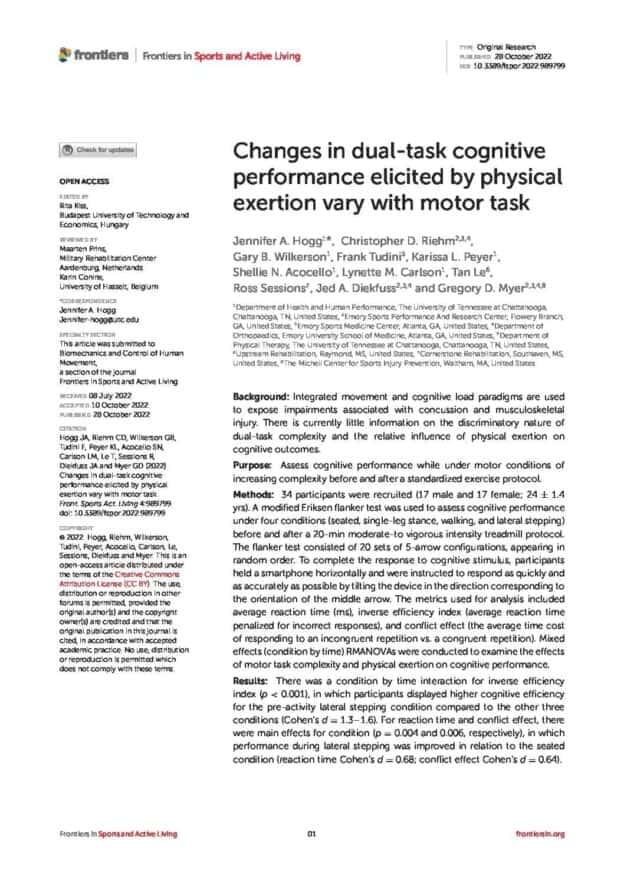Abstract
Background: Integrated movement and cognitive load paradigms are used to expose impairments associated with concussion and musculoskeletal injury. There is currently little information on the discriminatory nature of dual-task complexity and the relative influence of physical exertion on cognitive outcomes.
Purpose: Assess cognitive performance while under motor conditions of increasing complexity before and after a standardized exercise protocol.
Methods: 34 participants were recruited (17 male and 17 female; 24 ± 1.4 yrs). A modified Eriksen flanker test was used to assess cognitive performance under four conditions (seated, single-leg stance, walking, and lateral stepping) before and after a 20-min moderate-to vigorous intensity treadmill protocol.
The flanker test consisted of 20 sets of 5-arrow configurations, appearing in random order. To complete the response to cognitive stimulus, participants held a smartphone horizontally and were instructed to respond as quickly and as accurately as possible by tilting the device in the direction corresponding to the orientation of the middle arrow.
The metrics used for analysis included average reaction time (ms), inverse efficiency index (average reaction time penalized for incorrect responses), and conflict effect (the average time cost of responding to an incongruent repetition vs. a congruent repetition). Mixed effects (condition by time) RMANOVAs were conducted to examine the effects of motor task complexity and physical exertion on cognitive performance.
Results: There was a condition by time interaction for inverse efficiency index (p < 0.001), in which participants displayed higher cognitive efficiency for the pre-activity lateral stepping condition compared to the other three conditions (Cohen’s d = 1.3–1.6). For reaction time and conflict effect, there were main effects for condition (p = 0.004 and 0.006, respectively), in which performance during lateral stepping was improved in relation to the seated condition (reaction time Cohen’s d = 0.68; conflict effect Cohen’s d = 0.64).
Conclusion: Participants tended to display better dual-task cognitive performance under more stimulating or complex motor tasks before physical exertion, likely associated with the inverted-U arousal-performance relationship. When using dual-task assessments, clinicians should be mindful of the accompanying motor task and baseline exertion levels and their potential to disrupt or optimize cognitive performance.



Responses